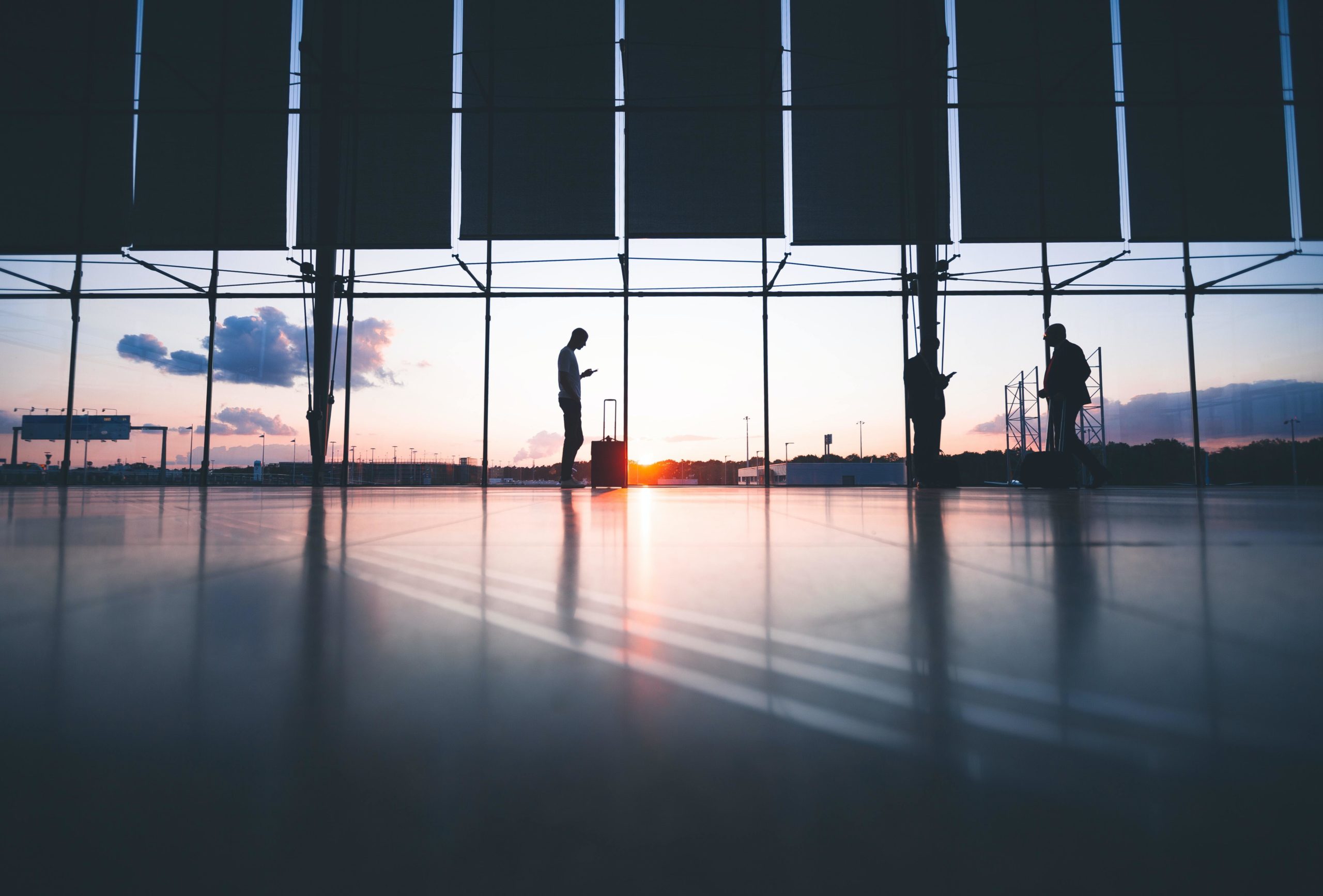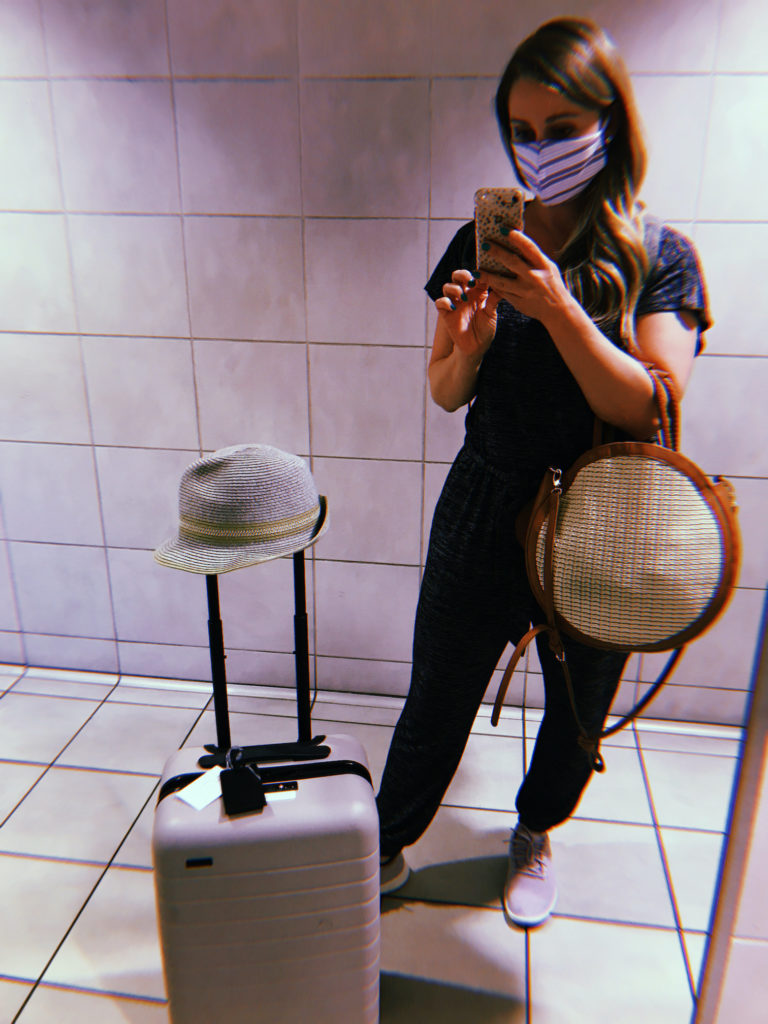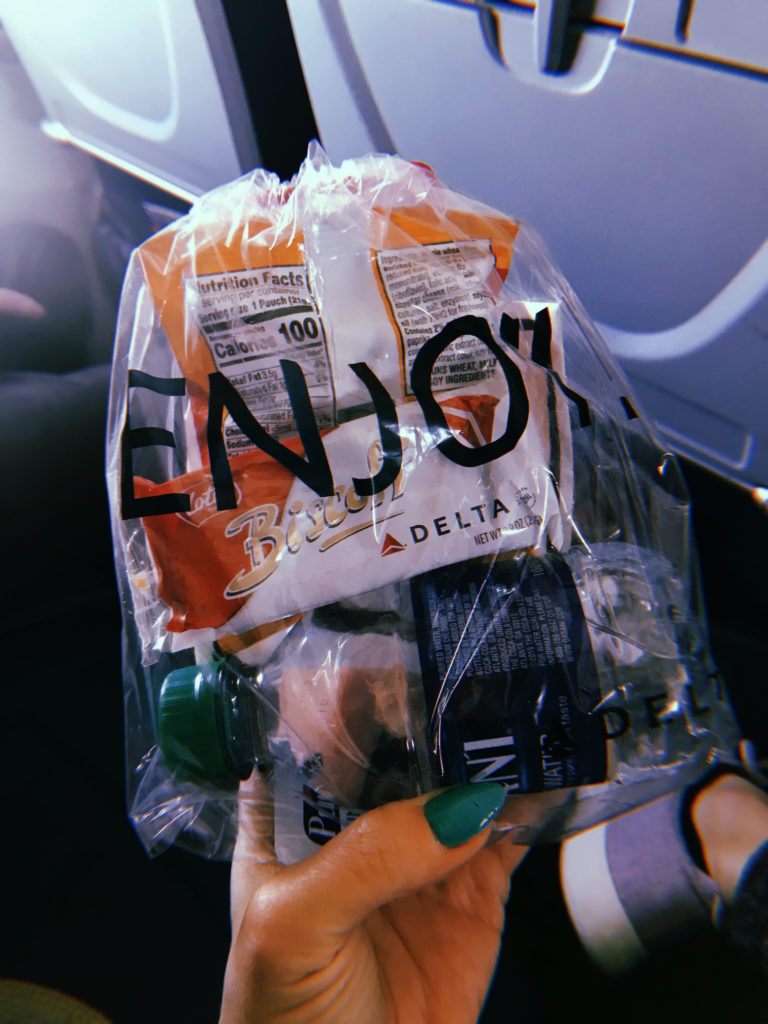
After a nearly 12-week flying hiatus, I boarded my first post-lockdown flight at the end of May. As with planning any trip, I weighed my options for departure and arrival times, calculated how to offset the cost of airfare with my points and miles, and researched the best ways to get around once I reached my final destination.
But, this wasn’t any trip. This was a round-trip journey during a global pandemic. Encouraged by the research I’d read about the (low) risk of getting sick from flying, along with the ability to work remotely, I made the choice to fly and visit family. And though I was flying domestically within the U.S., there were still a tremendous amount of new factors to consider.
If you’re thinking about flying soon, here’s what to expect—plus tips for making your journey run as smoothly as possible.
Before my trip
The first step in planning my trip was confirming my intended destination’s current quarantine and/or shelter-in-place requirements. Some states require a 14-day self-quarantine upon arrival, so make yourself aware of any state or local travel restrictions before booking a flight. (My destination did not.)
When I was confident in my ability to travel without government-issued restrictions, I then weighed the option of driving versus flying. Ultimately, given the timeframe of my trip, a total driving time of 28 hours (versus flying for less than 4 hours each way) wouldn’t make sense.
Next, I researched the airline’s requirements to fly. I flew with my preferred airline, Delta Air Lines, departing from Detroit Metro Airport (DTW) and arriving at Savannah/Hilton Head International Airport (SAV). In line with its new safety protocol, Delta requires all passengers (and crew) to wear masks or face coverings during flights.
While searching for flights, I noticed a number of ways COVID-19 has reshaped the travel landscape. For one, due to reductions in airlines’ flight schedules, as well as limited capacity on flights themselves, there were fewer options to choose from when booking my flights. Pre-pandemic, I’d flown between these exact departure and arrival airports on a direct flight with Delta. This time, I had to make a stop at Hartsfield-Jackson Atlanta International Airport (ATL); there were no longer direct flights available between these two airports. I was fortunate to find flights at times I preferred and with manageable layovers—though, of course, I would have liked to fly direct.
Once my flights were booked, I forwarded my itinerary to TripIt. With my travel plans in the app, I could monitor any potential changes to flight times (thankfully there were none!), share my plans with my Inner Circle (hi, Mom!), and do some further research about my destination.
While I've visited my final destination before, I always check TripIt’s Neighborhood Safety Scores for any and all places I travel to. Not only do some destinations fluctuate in terms of safety, new data points—like COVID-19 data—could also greatly impact the overall safety score of a destination.
Safety was also top of mind at Delta. I received multiple preflight emails about what Delta’s doing to keep passengers safe, including reminders about all passengers needing to wear a mask, government-issued COVID-19 travel restrictions, aircraft cleaning procedures, temporary lounge closures, and additional changes made to the Delta experience to protect its crew and passengers. These emails not only helped me prepare for my journey, but also gave me peace of mind.
At the airport
Arriving at DTW, my mindset was all about limiting touchpoints. The very first thing I did before I even walked in the door was put on my mask. I’d already checked in and retrieved my digital boarding pass. I just packed carry-on luggage, meaning I could skip the check-in/bag drop desk (limiting contact with airline staff) and head straight to the TSA checkpoint. Not checking a bag also allowed me to reduce the time I might otherwise have spent waiting in lines and/or in close proximity to others at the airport, i.e. those found at bag drop and baggage claim. Unsurprisingly, with overall flight volume down significantly (as evident on airport monitors), there were noticeably fewer travelers traversing all of the airports.

I had previously checked TSA wait times (both the day before and the morning of my flight) to gauge what time I should arrive at the airport ahead of my flight. I wanted to arrive with just enough time to accomplish what I needed to, but not any more time than necessary. In this moment of travel, security lines were non-existent—though I suspect that will change as more and more people return to flying.
Everywhere I turned there were signs reminding passengers about social distancing and staying six feet apart from others. For the most part, people were compliant—especially in areas where there was potential for congregation, such as in line for security. I was also encouraged by the frequency of hand sanitizer stations located throughout the terminal.

At each of the three airports I traveled through, the majority of restaurants and shops were closed. There were a limited amount of restaurants or eateries open for takeaway only. I did not see any open bars (though, at other airports, some are). That said, if you usually plan to grab a bite at the airport before a flight or during layover, come prepared. I’d recommend bringing your own snacks or even a packed meal with you (check TSA guidelines to confirm what you can bring through security), as there are limited food options otherwise.
With safety on my mind, I focused on remaining a social distance as best I could in all airports. Since I had to change terminals during my layover at ATL, I was grateful for TripIt Pro’s Interactive Airport Maps navigating me from gate to gate as efficiently as possible.
Ahead of boarding each flight, the gate agent made an announcement regarding their electrostatic spraying (cleaning) procedure taking place ahead of our flight, as well as the requirement for all passengers to wear masks. According to Delta’s website, face coverings are required across all Delta touchpoints, including check-in, Delta Sky Clubs, boarding gate areas, jet bridges, as well as on board the aircraft for the duration of the flight, except during meal service. Unfortunately, the only time I saw these requirements enforced—albeit inconsistently—was upon boarding and immediately following the on-board safety announcements (more on mask compliance later).
The gate agent also communicated that boarding procedures had been modified. For safety reasons, we’d board from the back of the aircraft forward, in hopes of reducing the frequency of passengers passing by those who had already boarded.
First Class and elite status members were welcome to board at any time, and I saw a few passengers do so. Personally, I waited until my row was called. The fewer people brushing past my seat, the better.
On board the aircraft
Upon boarding, flight attendants handed out sanitizer wipes to all passengers to wipe down their seat areas with (I had also brought some wipes with me for this very reason). I wiped down all areas I might touch, including the seatback pocket, tray table, window shade, seatbelt, arm rests, in-flight entertainment system, and the air vent. I also kept said air vent open for the duration of all flights (friendly reminder to bring a scarf or something to keep you warm!) as experts have recommended the benefits of doing so.
As advertised when booking, all middle seats in all cabins were blocked to promote social distancing. Delta is also capping the total number of passengers per flight. Some U.S. airlines are doing the same. Others are taking a different approach. For instance, United Airlines announced a policy giving passengers 24-hours warning and an opportunity to cancel or re-book a flight that’s expected to be near capacity. United has also said it would notify passengers at check-in if the flight was 70 percent full, or more.

Echoing earlier announcements, the safety briefing included Delta’s new COVID-19 travel requirements, including that all passengers wear masks. An additional announcement was made to remind passengers to keep masks on at all times during the flight except to eat or drink. Flight attendants then handed out masks to those passengers who didn’t have them.
Did every passenger have a mask at the start of every flight? Yes. Did every passenger wear a mask for the duration of the flight? Sadly, no. I watched as the passenger in the row next to me lowered his mask to below his chin after takeoff, and it remained that way for the duration of the flight. I did, however, observe small children maintaining their mask compliance without a problem.
Since all flights (from DTW to ATL, ATL to SAV, and back again) were under two hours, flight attendants handed out pre-packed snack bags to passengers, filled with personal hand sanitizer, a small bottle of water, and your typical Delta snacks. These pre-packed snack bags took the place of Delta’s usual in-flight service, helping to limit the crew-to-passenger interactions for everyone’s safety. In-flight services will vary depending on the length of your journey. If you have an upcoming flight with Delta, you can read more about what to expect from onboard services here. Per preflight announcements, passengers are welcome to remove their masks to enjoy their snacks and drinks, but are expected to replace them when they’ve finished. Though, if you can (safely) hold off eating or drinking while in-flight, keeping your mask on at all times is the safest choice.

Upon landing, flight attendants encouraged passengers to disembark row by row to allow for social distancing. How did that go, you ask? On some flights it went better than others. Seemingly, there’s always that one person who needs to sprint off the plane before you. *shrug emoji*
Overall observations
You’re probably wondering: Did I feel safe? My answer is yes. However, safety—and feeling safe—is a relative and personal experience. Each destination and trip requires its own careful weighing of risks and benefits. I went into this journey armed with the knowledge that planes are well-ventilated (read more about HEPA filters here), that I would be wearing a mask at all times to help protect me, and the habits I’ve developed over the past few months of frequent hand washing and not touching my face would also help keep me safe. I also appreciated the frequent communication from Delta, from their preflight emails to the safety announcements before boarding and again before takeoff, about their new and increased safety procedures.
Could I have felt safer? Absolutely. I do wish Delta employees would have enforced the airline’s requirements that passengers wear masks at their myriad of touchpoints, especially at the gate and during flights. That said, there’s a limit to what airline staff and crew can mitigate and manage. Every passenger has a part to play—in not only keeping himself or herself safe, but also looking out for the wellbeing of others.
Wear a mask—properly. Stay aware of your surroundings and keep six feet away from others. Wash your hands as frequently as possible. We all want to get back to traveling. Practicing these safety measures (which aren’t going away anytime soon) will make the journey to get there easier on everyone.

